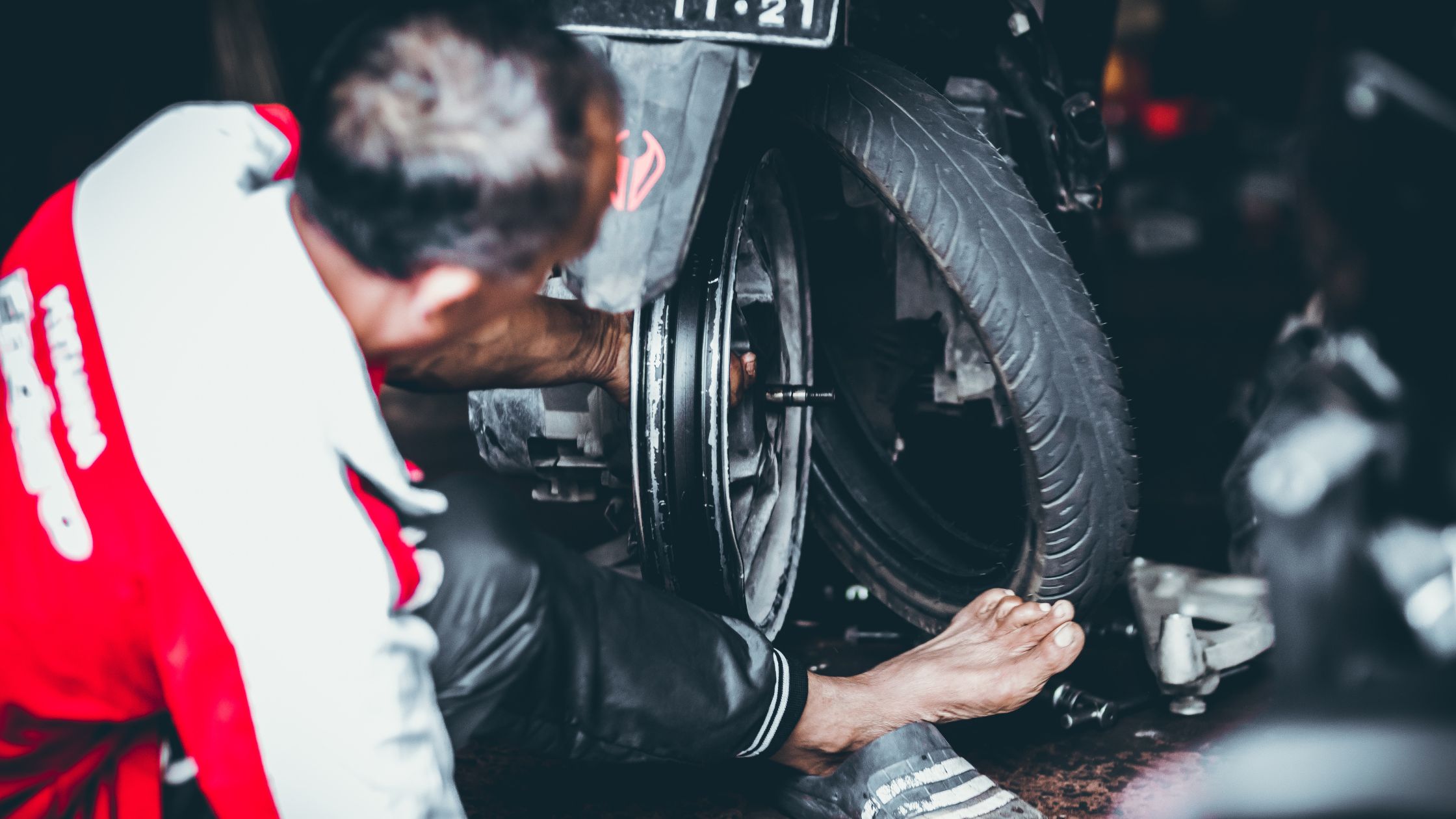Jika anda sedang mencari How Does The Rpm Affect The Motor, anda berada di tempat yang tepat! Disini saya akan mencoba membahas beberapa pertanyaan mengenai How Does The Rpm Affect The Motor.
What happens when RPM increases?
Once the crankshaft has turned 360 degrees, it is referred to as a revolution. RPMs or Revolutions Per Minute, describes the number of times the crankshaft completes its rotation and the speed at which it does so. Vehicles operating with higher RPMs often demand more fuel and force the engine to work harder.
Is high RPM good for engine?
Modern drivetrains are programmed to keep engine revolutions low in the name of efficiency, and while it’s indisputable that high RPMs burn fuel faster and increase strain on components, it’s actually good for the engine to run through its RPM range on occasion.
Does more RPM mean more speed?
RPM stands for “revolutions per minute.” It’s a measure of how fast the engine is spinning. In general, the faster an engine spins, the more power it makes. For any gear given, more RPMs, the faster the car goes. A small gear will have to make more spins around the crankshaft to keep pace!
Is higher RPM better car?
Racing RPMs Running at lower RPMs equates to higher torque and thus lower horsepower, while making higher RPM power outputs less torque and higher top horsepower. In a straight line race, higher RPMs take precedence.
How many RPMs is too high?
I would say anything up to 9000 rpm should be fine. That’s why they call it redline. If 7750 was its safe limit then that would be the redline. Now 10000rpm might be considered as unsafe.
What increases engine RPM?
Car engine rpm increases as you press the accelerator, as does power — at least to a point. An engine doesn’t necessarily produce its maximum power at its highest rpm. Engine specifications typically present the peak horsepower figure followed by the rpm at which it occurs, such as 252 hp at 5,600 rpm.
Is 5000 RPM too much?
5000 is where the fun starts. It’s not staying there for extended periods. You’ll be fine. The reason it’s so sluggish is that the transmission is programmed to save fuel so it’s always in a higher gear.
What is the best RPM to drive at?
Whenever possible, try to avoid hard or sudden acceleration to high speeds so that you prevent your engine from damage caused by over-revving. Step 4: Maintain fuel efficiency. For the best fuel efficiency, keep your RPMs between 1,500 and 2,000 RPM when driving at a constant speed.
Why is 7000 RPM the limit?
Petrol engines usually redline at 7000-8000 RPM while diesel hits the peak at around 4500 RPM. This is because diesel engines are not made for high RPM in the first place. They are slow to combust than petrol and are mainly focused on more torque rather than RPM.
Is high or low torque better?
“Higher torque at lower r.p.m. means you have a lot more horsepower at lower r.p.m., which makes it easier to tow things from a standstill. That’s usually how trucks are geared,” Murray said. “High torque at higher r.p.m. means more power while you’re already underway, which usually results in higher top speed.
Why is RPM important?
For cars that use manual transmission, it is of great importance: RPM measures the number of engine cycles and then indicates the appropriate time to move between speeds either by moving to a higher speed or less speed.
Why is my RPM so high when I drive slow?
Transmission fluid leaks are present, preventing the system parts from being lubricated. There’s a faulty clutch causing your transmission to slip up when changing gears. The speed sensor is malfunctioning and stopping the vehicle from switching gears. Idle control valve damage is failing to manage the RPM.

What is better torque or horsepower?
Horsepower is a good indicator of overall power but the torque can tell you a little bit more about what the car is capable of. It’s worth bearing in mind, though, that the higher number doesn’t always mean more towing capacity, acceleration, or speed. The weight of the vehicle plays a huge part in its abilities.
How is RPM related to speed?
It means revolutions per minute or rotations per minute. Technically, RPM is a unit of rotational speed; but in reality, it’s more often used to say things like “engine RPM”, meaning: “The engine’s rotational speed”. As if when saying: “What’s your car’s mph?” and meaning: “What’s your car’s speed?”.
What is the normal RPM for a car?
In most of today’s cars, an idle speed of 600 to 1000 RPMs is average. If your car is idling rough, though, it won’t feel smooth. The RPMs will jump up and down, for example, or they’ll fall below 600 RPM (or whatever is typical for your vehicle).
How many RPMs is 70 mph?
70mph = 2413rpm. how do you know your exact rpm?
Does high RPM consume more fuel?
If you drive your car at a higher rpm range, you will definitely consume more fuel. Also, if you shift gears often, your engine goes through fluctuation of torque output which causes it to consume more fuel. Hitting the pedal to the metal doesn’t make any sense. Be slow and steady when you start accelerating.
How does throttle affect RPM?
rpm is proportional to throttle position/flywheel weight.
Does lower RPM save gas?
You probably already know that low RPMs are best for fuel efficiency. But there’s more to it than simply shifting early. You probably already understand the basic concept of driving a stick-shift car for maximum efficiency: Keep the RPM as low as possible. The faster you spin your engine, the more fuel it consumes.
How many RPMs is 60 mph?
It does between 2,000 and 2,100rpm at 60 mph.
How many RPMs is 80 mph?
The RPM you’re seeing is a function of your speed (80 MPH), your sixth gear’s ratio (0.756), your differential’s ratio (3.91) and your tires’ circumference. Those items are essentially fixed, so you’re going to see roughly 3,200 to 3,300 RPM at 80 MPH.
Can low RPM damage engine?
To answer your question, no it isn’t bad for your car to keep it in as high a gear as you can while still maintaining speed. As long as you are above idle in RPM and your engine isn’t lugging, you aren’t doing any damage.
What RPM is best for fuel efficiency?
Between 1,300 and 1,500 RPM is the most fuel-efficient engine speed, or what some would call the “sweet spot.” When you’re driving on the highway, aerodynamics become a key factor in the work required to move the truck. You have two options to lower the workload: improve the truck’s aerodynamics, or slow down.
Does RPM affect fuel economy?
RPM And Fuel Efficiency As a thumb rule, the lower you keep your engine’s RPM, the less fuel it is going to consume. Going too low might stall the engine but keeping the RPMs just above idling will not only keep the engine puttering on, but it will also do so in a most economical manner.
Terimakasih telah membaca How Does The Rpm Affect The Motor, semoga jawaban dari pertanyaan anda telah saya jawab semua. Semoga bermanfaat!
 Mobil Series Situs Mobil Terbaik se-antero Bintaro
Mobil Series Situs Mobil Terbaik se-antero Bintaro
